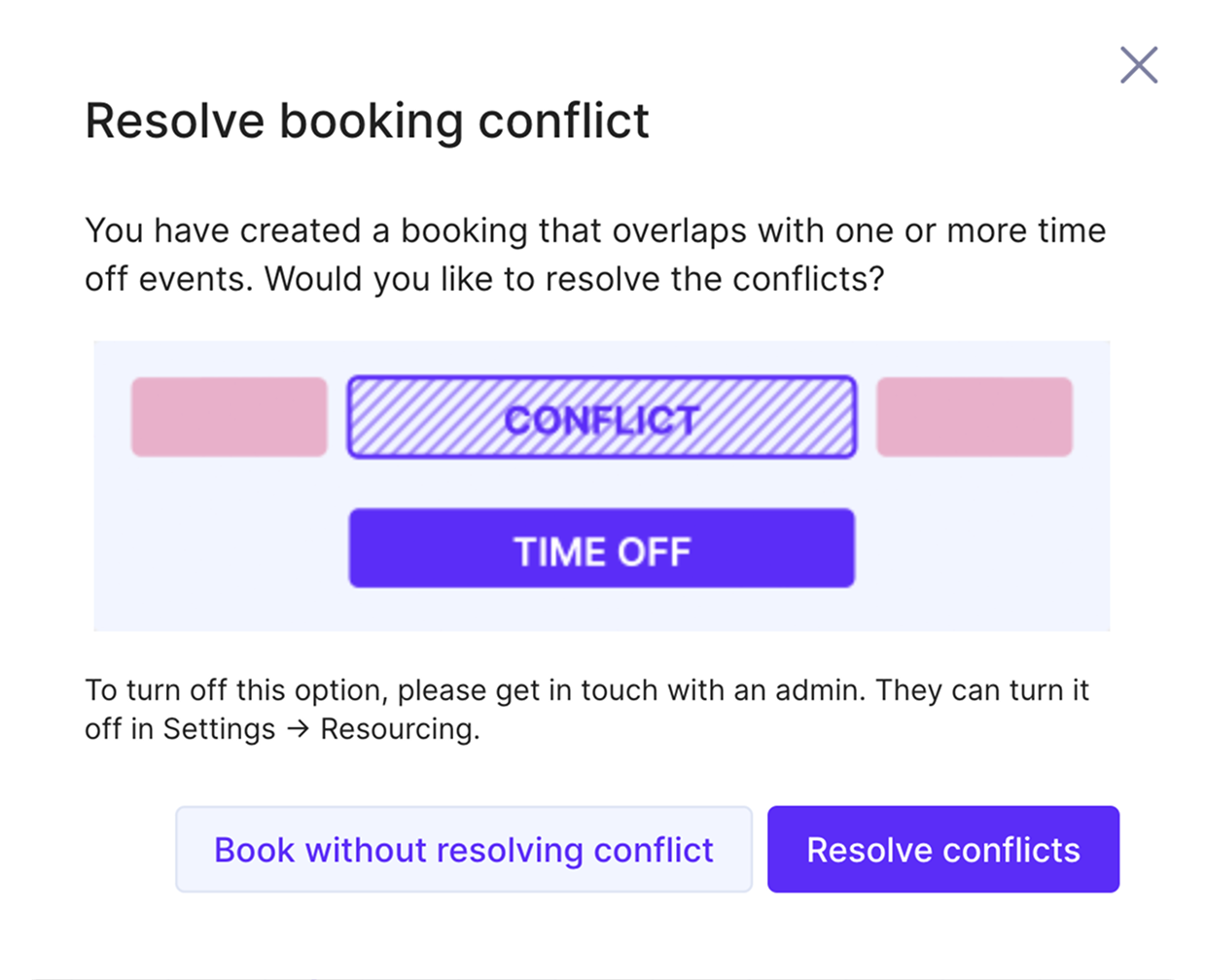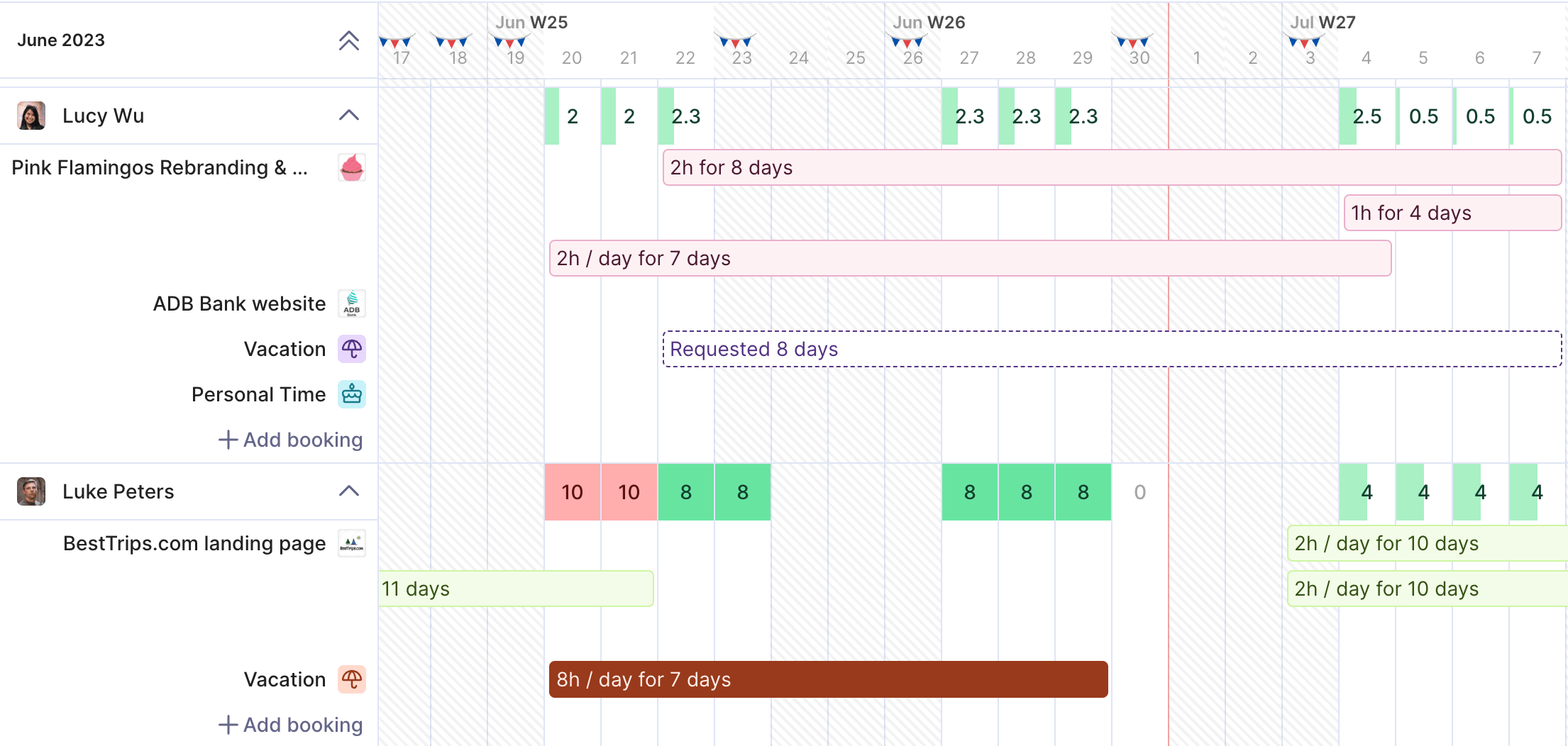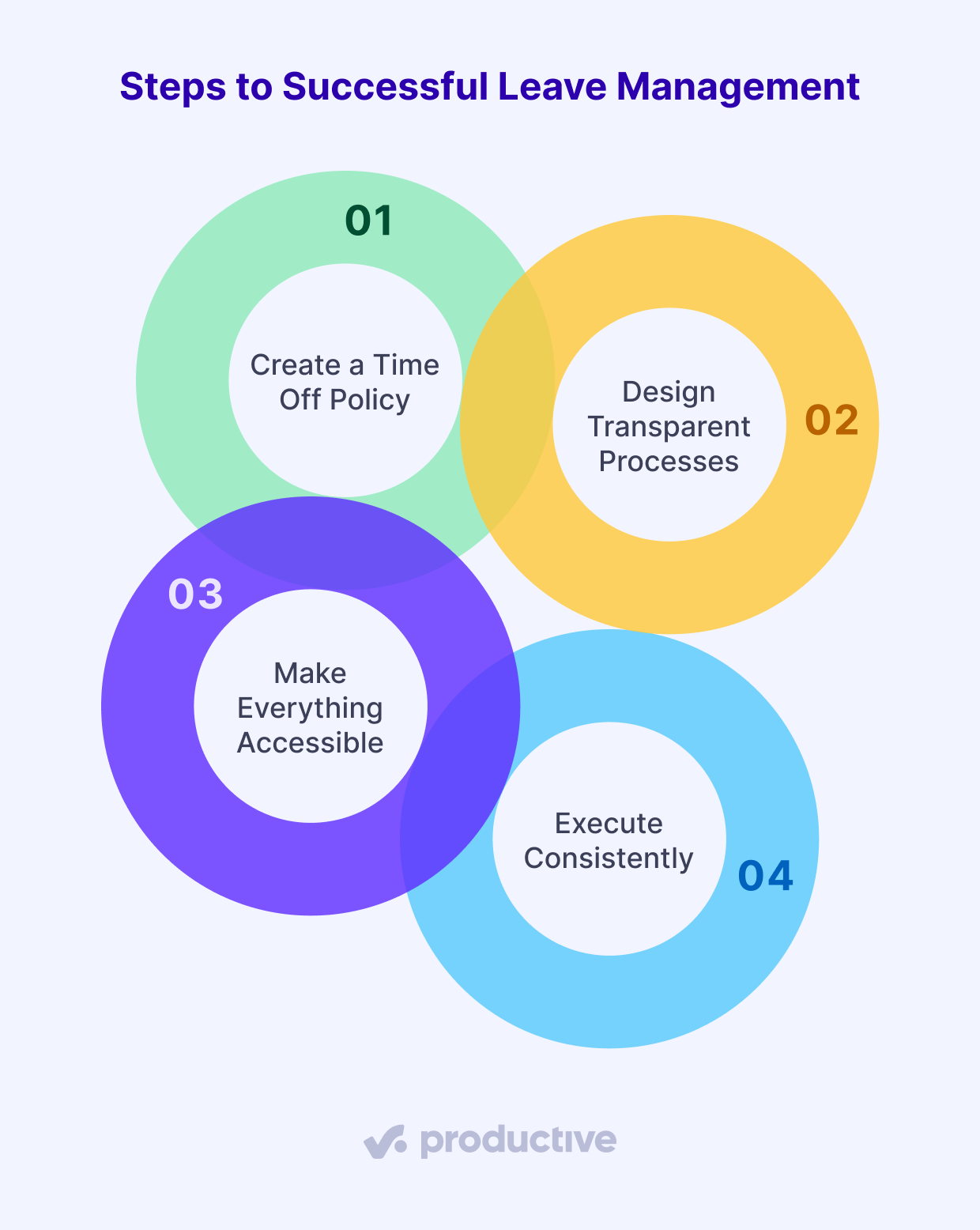How to Keep Track of Employee Time Off and Still Deliver

If you’ve wondered how to keep track of employee time off without drowning in spreadsheets and Slack messages, look no further. Learn how to conquer the HR chaos and keep your projects and business running smoothly.
Let’s play a game.
(It’s not the one from the horror movie series, don’t worry.)
Without asking anyone, can you answer these four questions in under two minutes:
- Who’s out next Tuesday?
- What happens if a key team member calls in sick?
- If a client called with a 3-week project starting Monday, could you tell them immediately who’s available?
- Can you see potential vacation conflicts 30 days out?
If you answered no to any of these, you’re not alone—and you have a problem. Many professional services businesses struggle with time off management. And it’s not just about the general chaos of not knowing who’s where when. How you keep track of your team’s paid time off (and other absences) directly impacts your operations, the quality of your work, and ultimately your revenue.
In this article, we’ll tackle the common woes of leave management—and show you the path to a brighter future where you’ll never again have to wonder where Molly is and when she’s coming back.
How to Keep Track of Employee Time Off When It’s So Complicated?
Remember when vacation tracking meant looking at a calendar on the wall? Those days are as gone as the fax machine. Welcome to the era of remote teams, unlimited vacation days, mental health days, international holidays, contractor policies, and half-day requests.

People still call in sick, but that’s the last real link between time off and telephones.
No wonder so many of the managers we talk to describe leave tracking as “cumbersome,” complain that there’s “no easy way to see who’s out of the office” and want “better integration or replacement of their HR system.”
The modern workplace is a perfect storm of complexity. Here are just a few of the factors that make it so:
1. Remote Work
With so many businesses today embracing the hybrid or remote way of working, you can’t just look around to see who’s available. Are they working from home or are they out of office?
2. Seasonal Surge
According to Paycom, employees can anticipate a 40% surge in leave requests in the summer. And what about Christmas, Rosh Hashanah, Bayram, Midsommar, snow season in Switzerland? There are always peak periods for absence requests, and probably not all of them can be absent at the same time.
3. Generous Leave Policies
As work-life balance becomes a bigger priority, more companies arere vacation time available means more requests. And more need for leave management.
3. Different Types of Time Off
It’s not just vacation time. It can be unpaid time off, sick leave, maternity and paternity days, personal time, half days, or the casual “I just need a couple of hours off.” The more flexible the policy, the more moving parts to track.
4. International Teams
Cross-border teams are no longer rare and exotic. With the rise of remote work tools, they’ve become a standard part of the modern employment landscape. But global teams bring global complications: different national holidays, different labor laws, and often different time zones. What looks like a normal Monday to you might be a public holiday (and a compliance risk) somewhere else.
5. Contractors vs Employees
Many professional services firms run on a mix of full-time staff and freelancers. But contractors don’t always follow the same policies as employees—they may have flexible schedules, different availability, or other client commitments.
How Productive Addresses the Complexity
Tracking time off in today’s workplace demands a tool that can handle more than just “vacation vs. not vacation.” Productive gives you the flexibility to adapt absence management to your exact policies and processes:
- Custom absence categories: paid time off, vacation days, sick days, even “vet visits” if you want. You define the categories you need.
- Granular booking: track full days, half days, or even hours.
- Flexible rules: differentiate between paid time off and unpaid leave, limited or unlimited, approval required or free booking.
- Remote work policies: teams can request, track, and review remote work days, so you always know who’s working remotely—and it doesn’t affect availability or project planning.
- Synchronization with other tools: automatically sync with Slack and external calendars so everyone knows who’s out.
- Conflict resolution: get a heads-up if you try to schedule project work over approved time off.
- All-in-one tool: absence requests flow directly into your resource planner, so you can see the impact before it becomes a problem.

Don’t DOUBLE-DIP YOUR NACHOS AND DOn’t DOUBLE-Book your people
With Productive, absence management isn’t a side process. It’s integrated into the same system you use for projects and resources, so tracking and managing leave requests becomes a natural part of planning.
The August Disaster or Why It’s Important to Track Time Off
Here’s a hypothetical situation. A 22-person creative agency tracks absences in a spreadsheet and runs projects in a separate tool. A major client campaign is due in August, but three key team members have overlapping vacations, which is not visible in the project tool. One week before the deadline, the project manager discovers the conflict.
What do you do? WHAT DO YOU DO?! (another movie reference here)
Management pulls emergency measures:
- One vacation is cancelled (hello, employee resentment)
- Two freelancers are brought in at premium rates
- The core team works weekends to meet deadline
The campaign is delivered on schedule, but relationships are frayed. And it’s not just team morale that took a hit. These are the costs involved:
- Emergency freelancers: $9,000
- Weekend overtime: $3,000
- Vacation change fees: $1,200
- Productivity loss from rushed handovers and rework: $5,000
- Strained client confidence: potential risk to future work
- Team morale: damaged, with burnout and turnover risk rising.
Add it up, and the “invisible” cost of poor absence tracking easily clears $15-20k on a single project—and that’s before factoring in long-term damage to relationships and culture.
The simple fix that could have prevented this? An integrated system where vacation requests live in the same place as project timelines and resource allocation.

Get full visibility—SEE HOW absences affect your project schedules
The Risks of Poor Time Off Tracking
While the illustrative scenario above is somewhat extreme, something as seemingly minor as tracking your team’s PTO has more repercussions for your business than you think.
Inefficient leave management puts you at risk of:
- Project disasters: Resource planning failures; you execute, but poorly and pay the price for it.
- Revenue leaks: You’re forced to hire a contractor, you miss an opportunity.
- Time leaks: Lots of unnecessary admin work + potential for errors.
- Team frustration: Employee balances are not visible.
- Payroll nightmares: Compliance slip-ups or inaccurate balances.
- General chaos: With poor visibility, you’re not managing but firefighting.
Why Businesses Struggle With Tracking Absences
We’ve already established that leave management in AD 2025 is complex. Work dynamics are changing, and there are countless moving parts. From conversations with hundreds of customers, we’ve found that most struggles with tracking time off boil down to two issues:
- Everything is done manually
- Teams rely on a patchwork of disconnected tools
Often, it’s a messy combination of both. We’ve seen businesses juggle Excel files, Google Workspace tools, email, Slack, shared calendars, even the plain old pen and paper. Sometimes an HR system or PTO tracker is in the mix, but it’s rarely connected to resource planning or project management.
And even when the mechanics work, businesses rarely check if employees actually feel good about how time off is managed. A pulse survey can tell you if your system feels fair to your team or if it’s quietly breeding resentment.
A Disconnected Leave Management Flow
Here’s what the process often looks like:
- Employee requests vacation (via email or HR system)
- Manager approves (in the HR system)
- Someone manually adds the absence to project calendar (maybe)
- Someone else updates resource planning (if they remember)
- Project managers discover conflicts (too late)
Aside from the fact that whatever you do manually is chronically unreliable, error-prone, and time-consuming, the core problem with this type of setup is that “people management” is completely separate from “work management.” Time-off information lives in tables, calendars, or admin tools, while project impact planning lives in project management systems. And like relatives holding a grudge, they never talk to each other.
How to Keep Track of Employee Time Off
Unlike many Instagram ads, we’re not here to sell you the fairytale of “one magical app” that solves a very real, very complex problem. Yes, tools matter. But tools alone won’t save your leave management if your process is broken.

If your current system is a mess, you need to do some housekeeping before you start shopping for platforms.
This is also the time to standardize documents; using something as simple as a free paystub template can help ensure everyone’s information is consistent before you move to a more advanced system.
1. Create a clear time off policy
Start with ground rules: How many days of paid time off are available? Do they increase with tenure? Is unpaid leave an option? Are there collective company breaks? Do policies differ by role or location? We’re not here to write you HR manual for you—just to say that you need a policy, period.
2. Design transparent processes
How does someone actually request time off? Who approves it? What’s the timeline for making a request, and how soon should they expect an answer? Absence management starts with an ask and ends with visibility across the team. Map that flow.
3. Make everything accessible
Once you’ve defined your policy and process, put them where everyone can find them. It could be a handbook, a shared doc (Productive Docs work nicely), or even a glossy PDF—whatever works for you. The key is that the resource exists and people know exactly where to look.
4. Execute consistently
Rules and resources mean nothing if you ignore them. Avoid ad hoc decisions unless something truly isn’t working. If you need to adjust the process, do it thoughtfully. Don’t set up a perfect project and then botch the execution.
Benefits of an Integrated Absence Management System
Managing leave in spreadsheets or across disconnected tools will always leave gaps. An integrated system closes them—and gives you back control.
1. Real-Time Project Impact Visibility
When absences live in the same system as your project timelines and resource allocation, you can catch conflicts before they become crises. In Productive, absence data feeds into your resource plan automatically. This can save you from overpromising and underdelivering, and give you the flexibility to handle urgent projects and last-minute opportunities.
2. Eliminate Manual Data Entry and Double Work
Stop copying the same info across multiple systems. In Productive, approved time off triggers real-time updates to your resource plan, project timelines, and even Slack or external calendars. Less admin, fewer errors, and no more “Oh, I forgot to update that one.”
3. Connected People and Work Management
Your “people management” and “work management” finally talk to each other. When time off data isn’t trapped in an HR silo, every part of your business has access to the same real-time information. With custom time-off categories like those in Productive, you decide what affects availability and what doesn’t. This means better staffing decisions, more accurate project timeliness, and no more emergency scrambles.
4. True Transparency for Everyone
Employees can see the status of their requests and their remaining balance, and managers can answer “who’s available next Tuesday?” in under two minutes. Everyone works from the same source of truth, cutting down on confusion and endless back-and-forth.
How to Keep Track of Employee Time Off the Smart Way
The modern workspace is complex, but tracking time off doesn’t have to be. With the right processes and an integrated system like Productive, you can see who’s off, when, and how it affects your projects—all without flipping between half a dozen tools or holding emergency meetings.
If you’re ready to stop guessing, start planning, and reclaim your weekends, book a demo and see how Productive makes leave management fully manageable.
